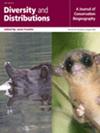Habitat Protection Alone Is Insufficient: Costa Rican Parrots Thrive in Altered Landscapes but Remain Vulnerable to Poaching
Abstract
Aim
Human population growth and resource overexploitation have induced major changes in global biodiversity. Costa Rica, with 26% of its land area protected, is often cited as a model of environmental conservation. However, conservation efforts have largely focused on habitat preservation, while overharvesting remains an unquantified factor in wildlife decline. Here, we used parrots as a model to assess changes in their presence, abundance and richness in relation to habitat transformation, while also quantifying for the first time the poaching pressure they face, driven by the demand for them as domestic pets.
Location
Costa Rica.
Methods
We conducted a broad-scale survey across the country to simultaneously obtain data on the relative abundance of parrots in different habitats and estimate poaching pressure by recording illegal household pets and parrots seized by authorities. Then, we related the presence, abundance and richness of parrots to habitat characteristics using two complementary approaches (i.e., patches along transects and points where we had detected at least one individual) and examined whether certain species were poached with greater intensity than others.
Results
We found that parrot presence, abundance and richness tend to decrease in modified habitats, particularly agricultural areas, although this trend reverses in human settlements. On the other hand, our surveys revealed near-ubiquitous ownership of native parrots illegally kept as pets, which were recorded in 86.6% of the sampled localities and in 81.5% of the surveyed houses. Several threatened macaw and Amazon species were poached more than expected attending to their abundances in the wild.
Main Conclusions
Although our methodology does not allow for a direct comparison of the impact of habitat loss and poaching, our findings suggest that parrot communities are affected by habitat changes while they can tolerate certain levels of habitat transformation, such as urbanisation. On the other hand, parrot species preferred by people still face intense poaching pressure for the domestic pet trade. Focusing conservation efforts solely on habitat protection will be insufficient to preserve these critical components of tropical ecosystems. More effective measures are needed to curb poaching and address the deeply ingrained cultural tradition of keeping wild parrots as pets.


 求助内容:
求助内容: 应助结果提醒方式:
应助结果提醒方式:


